The Picasso potato variety is a bright representative of the Dutch selection. Like other varieties bred in Holland, it has excellent taste, good disease resistance and high yield. We will describe the distinctive features of this variety, as well as the care for it, below.
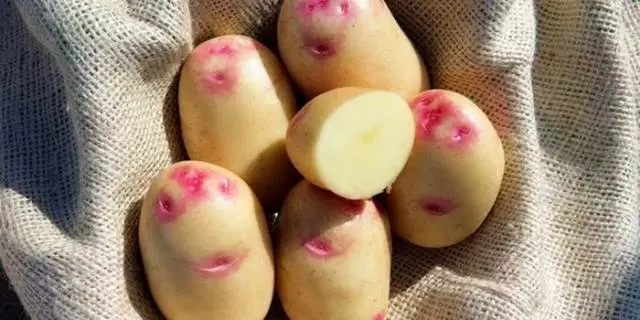
Characteristic of the variety
The Picasso potato is a late-ripening potato variety that can only be harvested after 110 to 130 days. Taking into account such ripening terms, as well as the general unpretentiousness of the variety, the State Register of Breeding Achievements of the Federation recommends planting it in the Central and Central Black Earth regions.
This potato cannot boast of the compact size of its bushes. At the same time, they are distinguished not only by their height, but also by their width. The spreading haulm consists of large, dark green leaves that have good curl resistance. During flowering, white flowers are visible among the large leaves of this variety.
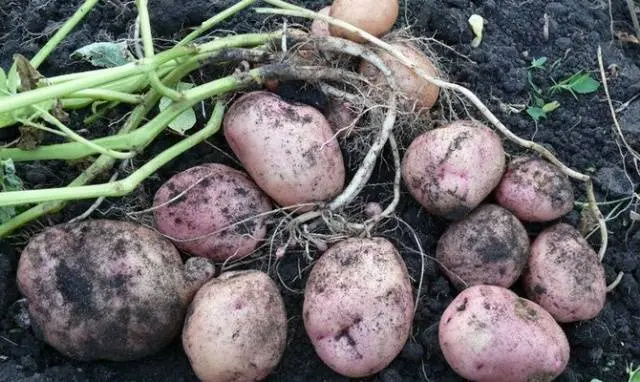
Each bush can form up to 20 tubers. Potatoes, like bushes, do not differ in miniature size. They are large and heavy, with an average weight of 80 to 140 grams. In their shape, they look like a rounded oval. A distinctive feature of Picasso is the coloring of potatoes. It was thanks to her that this variety was named after Pablo Picasso, the great Spanish artist.
The light yellow color of the potato skin, with pink spots around its eye, obviously reminded the breeders of Picasso’s paintings from the “pink period” of his work. The pulp of potatoes has a classic cream or milky white color. Starch in it is at a low level – only 10-12%. The taste of this potato is excellent. It does not darken when cut and does not boil soft when cooked. In addition, potatoes have excellent keeping quality and retain their taste and commercial qualities for a long period of time.
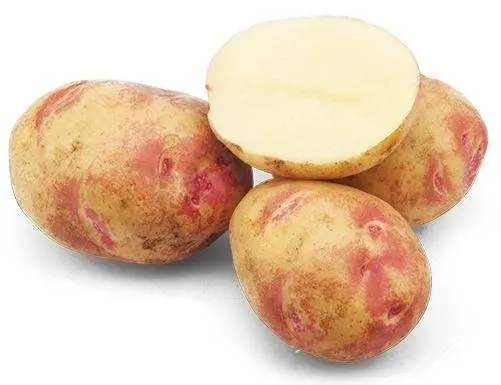
The Picasso potato has a good immune system that protects it from the most common diseases of this crop, namely:
- fusariosis;
- scab;
- nematodes;
- X and Yn viruses.
There is only one disease that can breach the immune system of this potato – Fusarium. From it, the tubers must be treated even before planting with any available preparation, for example, “Batofit”, “Integral” or “Fitosporin-M”. You can learn about other methods of dealing with this disease from the video:
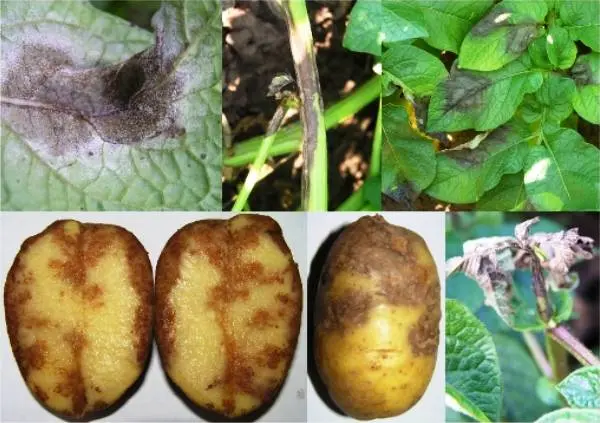
The yield of this potato is quite high. If we take average values, then from 20 to 50 tons of potatoes can be harvested from one hectare of land. In this case, the marketable appearance of tubers will be in 95% of the crop.
Recommendations for growing
This potato is late-ripening, so it can be planted a little earlier than early or mid-early varieties. It is recommended to start planting in late April – early May, when the threat of sudden frosts has passed, and the air temperature will be between +7 and +10 degrees.
Not the least important when planting late-ripening potatoes, to which Picasso belongs, is the pre-sowing germination of tubers. To do this, the potatoes must be placed in a bright place and ensure the temperature is not higher than +15 degrees.
When planting Picasso tubers, you need to take into account the large size of future bushes. Therefore, the minimum distance between tubers should be about 50 cm.
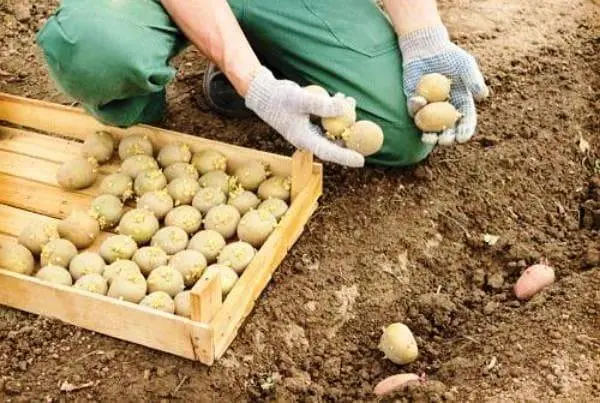
After germination, potato care should include:
- Weeding and loosening – these procedures will allow the roots of potato bushes to receive more oxygen and moisture. They should be carried out only after the young shoots reach a height of 6 – 7 cm.
- Watering – these potatoes can perfectly do with rainwater. But if the season turned out to be dry, then you need to water the potatoes yourself. For him, watering 1 time in 10 days will be enough.
- Fertilizer – potatoes respond well to the application of organic and mineral fertilizers. In total, potatoes must be fertilized three times during the season: after germination, before flowering and during flowering. After the end of flowering, it is not worth fertilizing the potatoes – this will not benefit.
Subject to all recommendations, the harvest of this potato will exceed any expectations.









